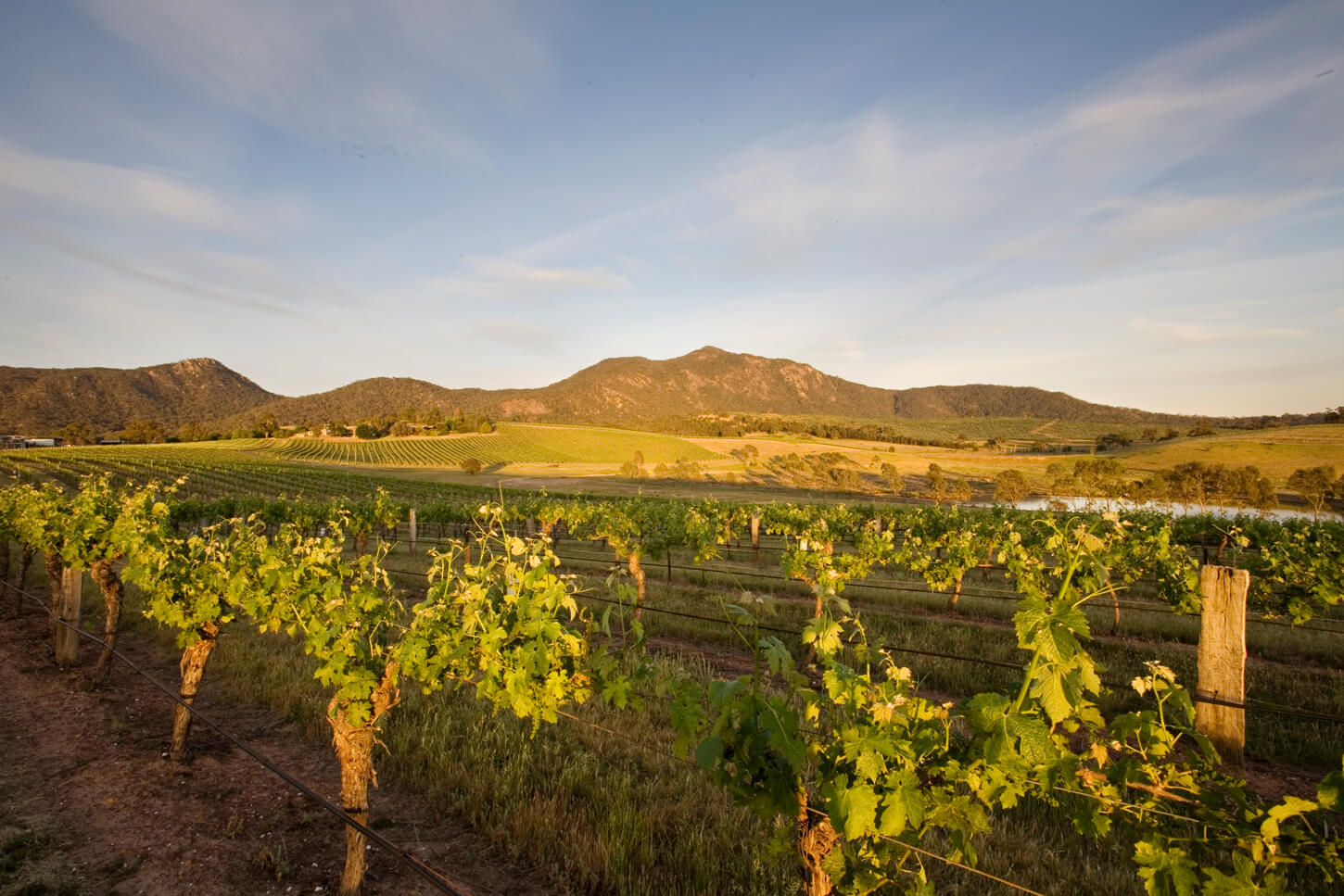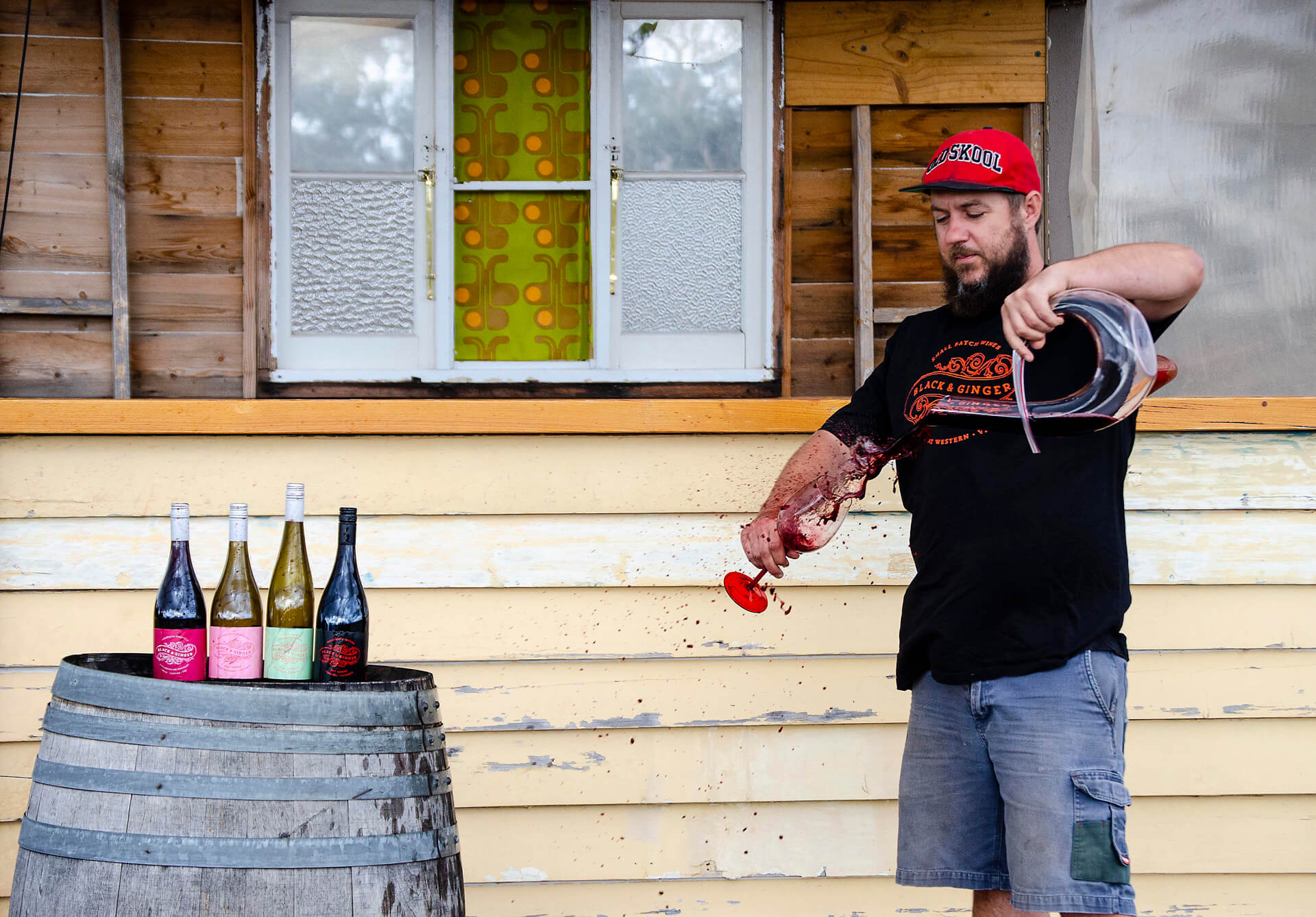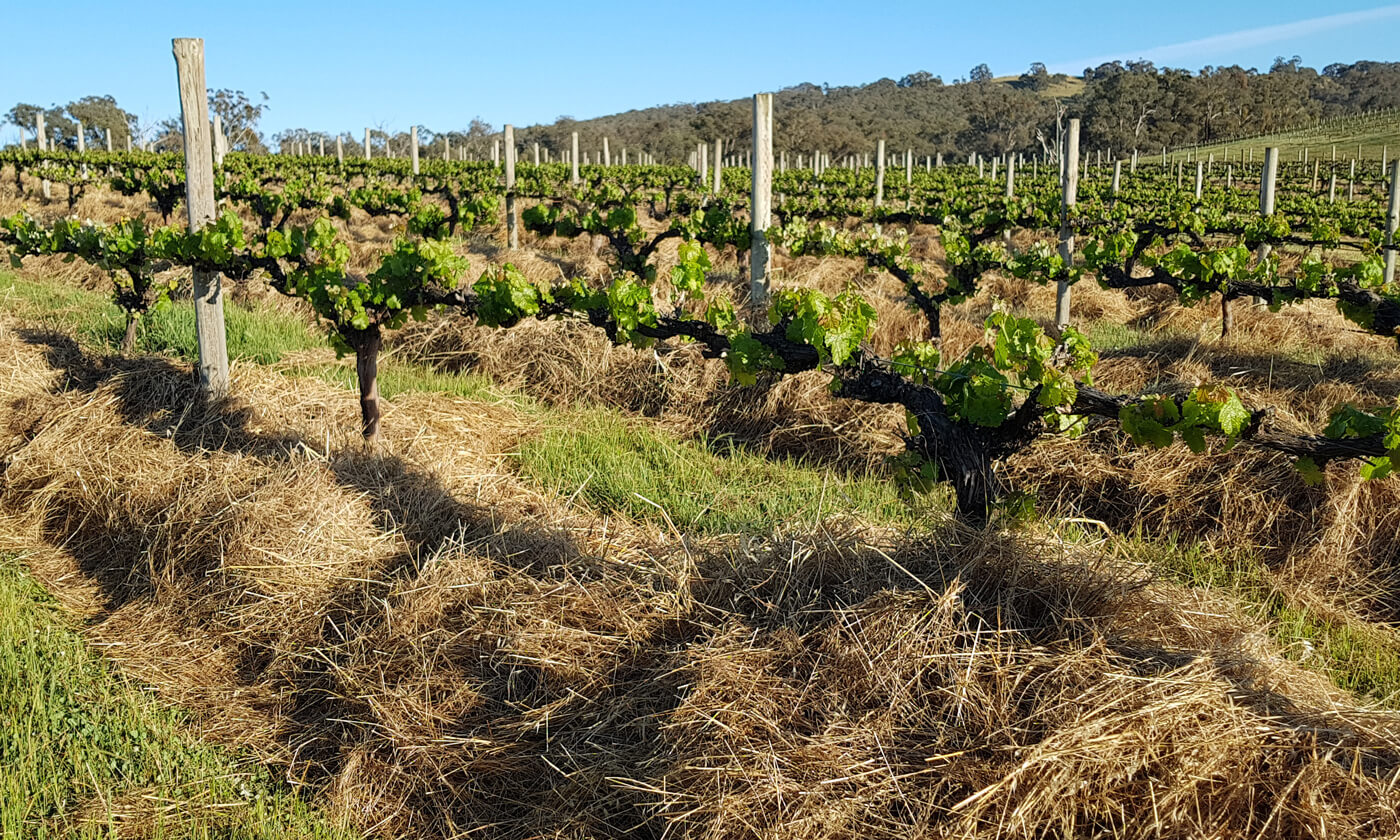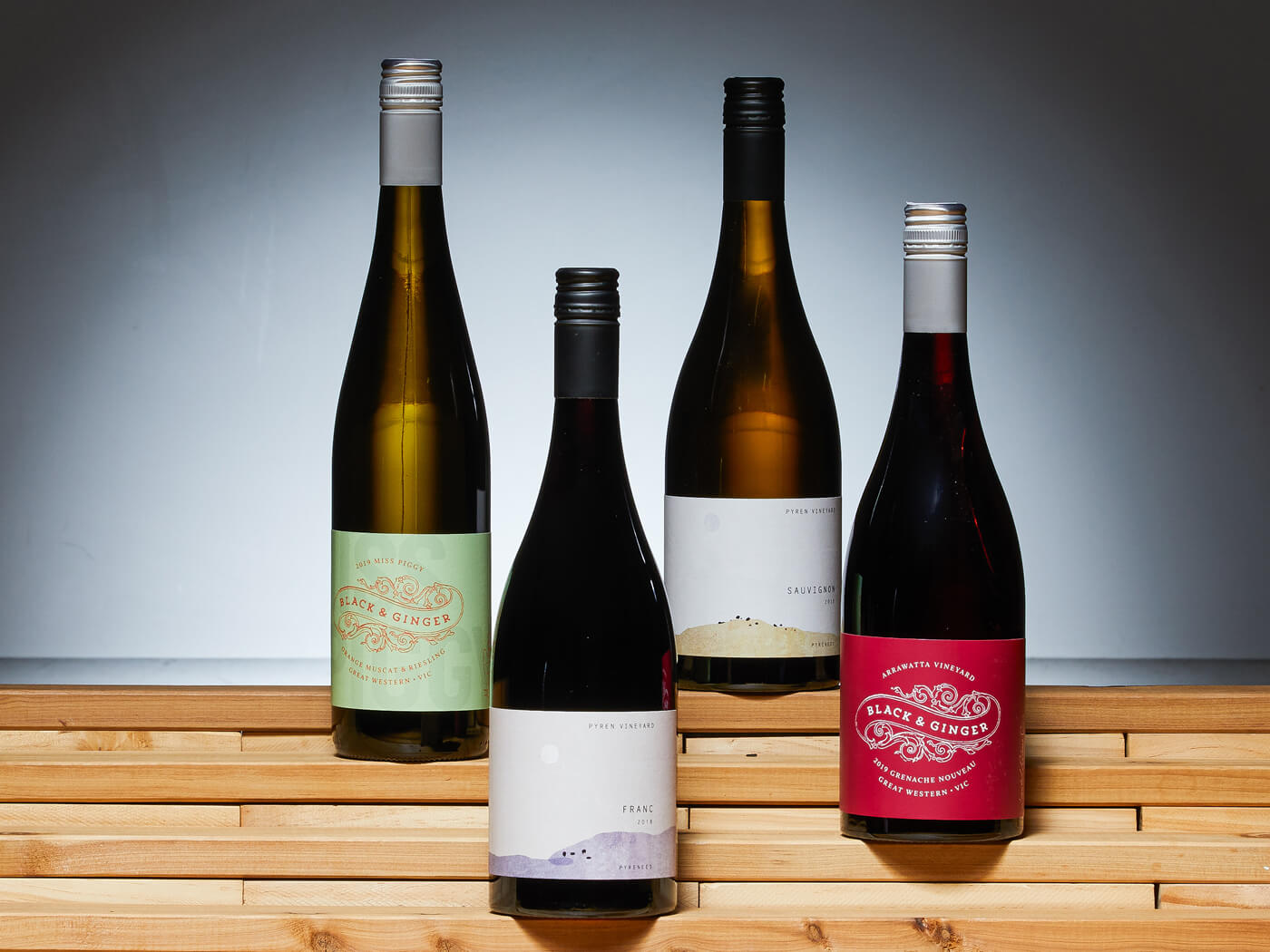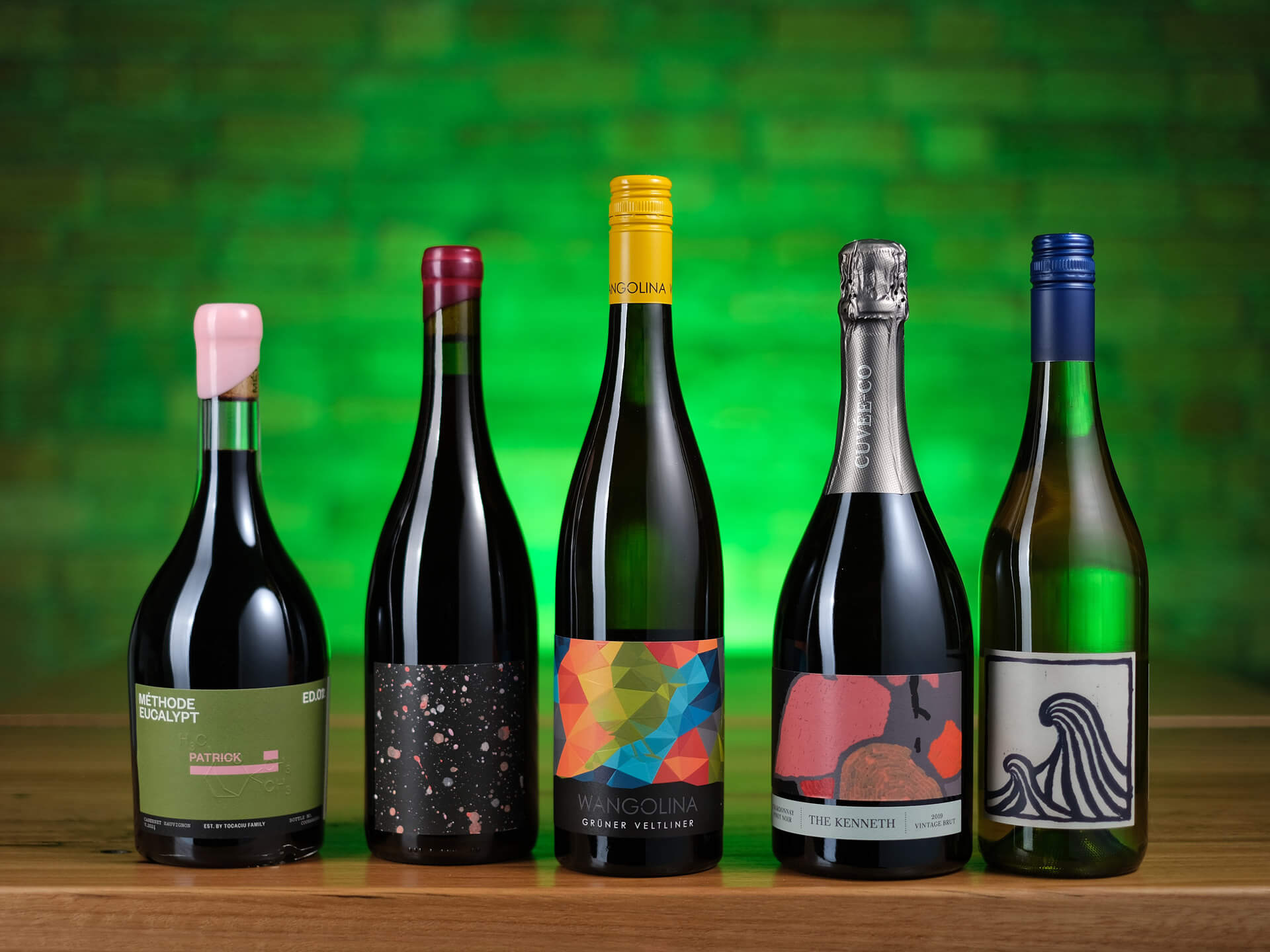The Grampians and Pyrenees are nestled in the Western Victoria viticultural zone, an umbrella classification that stretches across to the South Australian border. And while the area is vast, there are around half as many vines in the whole zone than there are in the Yarra Valley. This year’s Top 50 features Leighton Joy from Pyren Vineyard, in the Pyrenees, and Black & Ginger’s Hadyn Black, from Great Western.
The wine zone of Western Victoria contains the three major regions of the Grampians, the Pyrenees and Henty. Well, there are four actually, with Great Western effectively a parcel within the Grampians. Henty spills across the extreme south-west, with less than 200 hectares planted to vines and a decidedly cool climate, favouring riesling, chardonnay and pinot noir.
The Grampians and the Pyrenees share a little more in common, with the elevation of their attendant mountain ranges contributing to their subregional character, as well as a specialisation in red wines. Being further inland to the north-east, the Pyrenees is more continental in climate with warm days and cold nights, while the Grampians feel the influence of the Southern Ocean, with sea breezes doing the cooling at night.
In the Grampians, the kingship of shiraz (and riesling for white grapes, though whites in general account for only about 15 per cent of the total plantings) goes back some time. In Great Western, Seppelt was founded in 1863, while Best’s followed in 1865, and both have made and cemented significant reputations for producing shiraz.
“I’m pretty sure if you told some of the wise old heads in the region 20 years ago that you were planting Grenache in the Grampians,” Lane says, “they would have said you were crazy and that it will never get ripe. Back then, they would have been right.”
It’s worth noting that Best’s still works from those original plantings, and vine material from them has been labelled the Concongella clone by the CSIRO, which has been used to plant many other vineyards in the region and beyond. Best’s also have the oldest dolcetto vines in the world, and what are thought to be the world’s oldest pinot meunier and pinot noir vines, as well as a fascinating 1860s nursery block of over 30 mostly obscure varieties.
The profile of shiraz was further enhanced by producers like Mount Langi Ghiran making their mark in the 1980s. That site was first planted in 1970 but made famous by Trevor Mast, who purchased the property in the mid-80s. Mast became somewhat of the poster boy for the Grampians, with the region both growing in stature and increasing in plantings in the late 20th century. Mount Langi Ghiran was also one of the key cornerstones in the developing national interest in cooler climate shiraz.
The Grampians
The Grampians is dominated by shiraz. In fact, comfortably over 70 per cent of all production, red and white, is shiraz. Today, Hadyn Black, of Black & Ginger, sees diversification from the grape as not only important to exploring other possibilities, but also because it’s a well-served category. “It’s a very crowded market. There are some very established makers in the Grampians and Great Western, and the quality’s fantastic.”
![]()
The Mt Langi Ghiran vineyard is set against a backdrop of the Grampians mountain ranges.
However, it wasn’t that long ago that there was a lull in interest in both the Grampians and Pyrenees, with some significant sites being blended away. That neglected resource of vineyards found new meaning with makers like Rory Lane from The Story Wines (2011 YGOW People’s Choice) and Gary Mills from Jamsheed giving distinguished sites front-label recognition.
The Grampians is essentially a cool climate region, though with warm days over the growing period, shiraz is far from marginal. Makers like Lane, however, are seeking to emphasise the elegance the region has historically been known for, even in a warming climate. “We deliberately try to work with growers on cooler sites, that get longer hangtime and more moderate sugars,” says Lane, “and we have also asked growers to plant later ripening varieties such as grenache.”
Grenache is a variety that both Black and Lane believe has a big future. “I’m pretty sure if you told some of the wise old heads in the region 20 years ago that you were planting Grenache in the Grampians,” Lane says, “they would have said you were crazy and that it will never get ripe. Back then, they would have been right.”
Black currently works with Great Western riesling and grenache, as well as orange muscat from the only parcel in the region. That vineyard is also the source of some other unusual suspects. “They also have touriga nacional, graciano, tinta cao and tinta roriz,” Black says. “I got some Graciano last year, and a bunch of the other stuff this year. The graciano looked amazing, with some beautiful sour cherry characters and spice, so that’s something I’d definitely like to continue to work with.”
![]()
Hadyn Black with his Black & Ginger wines.
Although he owns a vineyard in Great Western, in Rhymney, Black’s not using the grapes for his own label. “We’re looking at planting some different varieties. We’ve got six hectares of merlot,” he laughs, “which is not exactly flavour of the month. I’m a really big fan of barbera, so I’d like to try that. Some grenache, because I think it works really well, and probably some nebbiolo.”
The Pyrenees
Like so many makers, Black has taken shiraz from the Malakoff Vineyard in the Pyrenees, which is also an important source of nebbiolo. Celebrated producers not anchored in the region, like Out of Step, Ben Haines, Fletcher, Lethbridge, Quealy and Latta, have all made acclaimed wines from the site.
That vineyard was first launched to fame when prominent Rhône vigneron Michel Chapoutier declared that “greatness was possible” in the Pyrenees. He made his first wine from the Malakoff site in 2004, hand-in-hand with his US importer. Chapoutier has since purchased three vineyards in the Pyrenees, and now works under the Tournon label, cementing his long-term belief in the region.
Jamsheed’s Mills also sources fruit from the Pyrenees to make a trademark 100 per cent whole-bunch expression. He takes grapes from the Pyren Vineyard, which is managed by second-generation custodian Leighton Joy. Like much of the Pyrenees, it’s an undulating site, which accounts for a good deal of diversity in aspect and soil distribution. “The earth here is a red/grey loam over silty clay with a high degree of variation following the lie of the land,” says Joy. “The common denominator throughout is the very high presence of quartz.”
The Pyrenees were planted to vines in the 19th century, with the last vines disappearing in the 1940s, before replanting in the 1960s. So, the Pyrenees lay fallow for considerably less time than more celebrated regions – both then and now – such as the Yarra Valley. The modern founders are still the region’s most acclaimed names, such as Blue Pyrenees, Taltarni, Mount Avoca and Dalwhinnie.
Interestingly, sparkling wine was an early focus in the Pyrenees, though the warm summer days make ripening later picked red varieties, such as cabernet sauvignon, a reliable proposition. The fact that both things are possible is testament to the heterogenous nature of the region. One thing that is a constant, though, is the need for water management in the low-rainfall district.
“Water access is certainly something that can influence a wine when coming out of parts of the region that have it, when compared with parts that do not,” says Joy. “We all know it’s warming up. 2017 and 2018 have been sensational years, bookmarked by hot and dry conditions. We, and many of the vineyards with limited water are utilising under vine mulch and compost to give our vines a fighting chance.”
Pyren is planted to the regional classics, shiraz and cabernet sauvignon, which are joined by malbec, cabernet franc, sauvignon blanc and petit verdot, but Joy has fine-tuned the Pyren expressions away from a regional style known for powerful reds with drying tannins, instead emphasising elegance and perfume. Pyren’s Little Ra Ra label steps further outside the square, but Joy sees the old and the new happily nestling together in the broader region.
![]()
Cabernet Franc vines at Pyren vineyard.
“We have a long history with some of the great names in Australian wine dotted throughout the map of Western Victoria,” he says. “This, coupled with lesser known yet well-established vineyards and the new kids on the block, has created a rather dynamic play in innovation. One lifts the other lifts the other…”
That sense of pan-regional connection runs deep, even if many vineyards across the Western Victoria zone are geographically spread out. “There is a reasonably high sense of community throughout the region, which culminates each year through both the Grampians Grape Escape and Pyrenees Unearthed Festival,” says Joy. “A general sharing of ideas is present, and there’s a co-ordinated annual tasting program where winemakers can present yet to be bottled wines for constructive critique. There’s a genuine desire for all producers in the region to be releasing high-calibre wines in their own expressions.”
The Wines
2019 Black & Ginger ‘Miss Piggy’ Orange Muscat & Riesling
Lifted aromatic nose of mandarin peel, talc, lime pith and orange blossom. There’s riesling drive, giving this direction and citric flavour, but that’s overlaid with that distinctly fragrant muscat profile of powdery florals and orange-skinned citrus. There’s a bit of sugar here, giving this a plump of texture and volume – rather than overt sweetness – with zippy acid and a chewy texture pulling the wine through a dry finish.
2019 Black & Ginger Grenache Nouveau
Bright and lifted nose of wild red berries, tart raspberries, macerated strawberries and balsamic, a hint of sarsaparilla and some dusky floral notes with gentle spice. This is vibrant and forward, with lifted fruit and generally a feeling of buoyancy, though it’s got some fruit weight and intensity, too; an open textural richness, gentle, fine tannins, finishing fresh and lively.
2018 Pyren Vineyard Sauvignon
This sauvignon blanc has a deep yellow hue. This has a waxy, savoury nose, with smoky, spicy herbal notes, pickled green peach, green cardamom, sage, thyme, cooked apple and pear. This is so far removed from a typical expression of sauvignon blanc, with barrel maturation apparent, lending this texture and a bit of heft, with a creamy, lees-rich profile knitting into the fruit, with vibrant acidity perking up through the finish.
2018 Pyren Vineyard Franc (cabernet franc)
There’s a bright openness here that speaks of the cabernet family but in a pretty, lifted and finely juicy way, with flashes of leaf, green peppercorn and thyme, but also those notes of dark berries, raspberry and dark plum. There’s a softness across the palate, and a carbonic bunchy feel, highlighting fruit over spice. It gets even more light on its feet with air, with supple tannins and a spark of acidity tugging the fruit flavours into step.
See the full list of Top 50 winemakers in the 2020 Young Gun of Wine Awards here. Join in our virtual events here, and also vote on who wins the People’s Choice until June 1.

